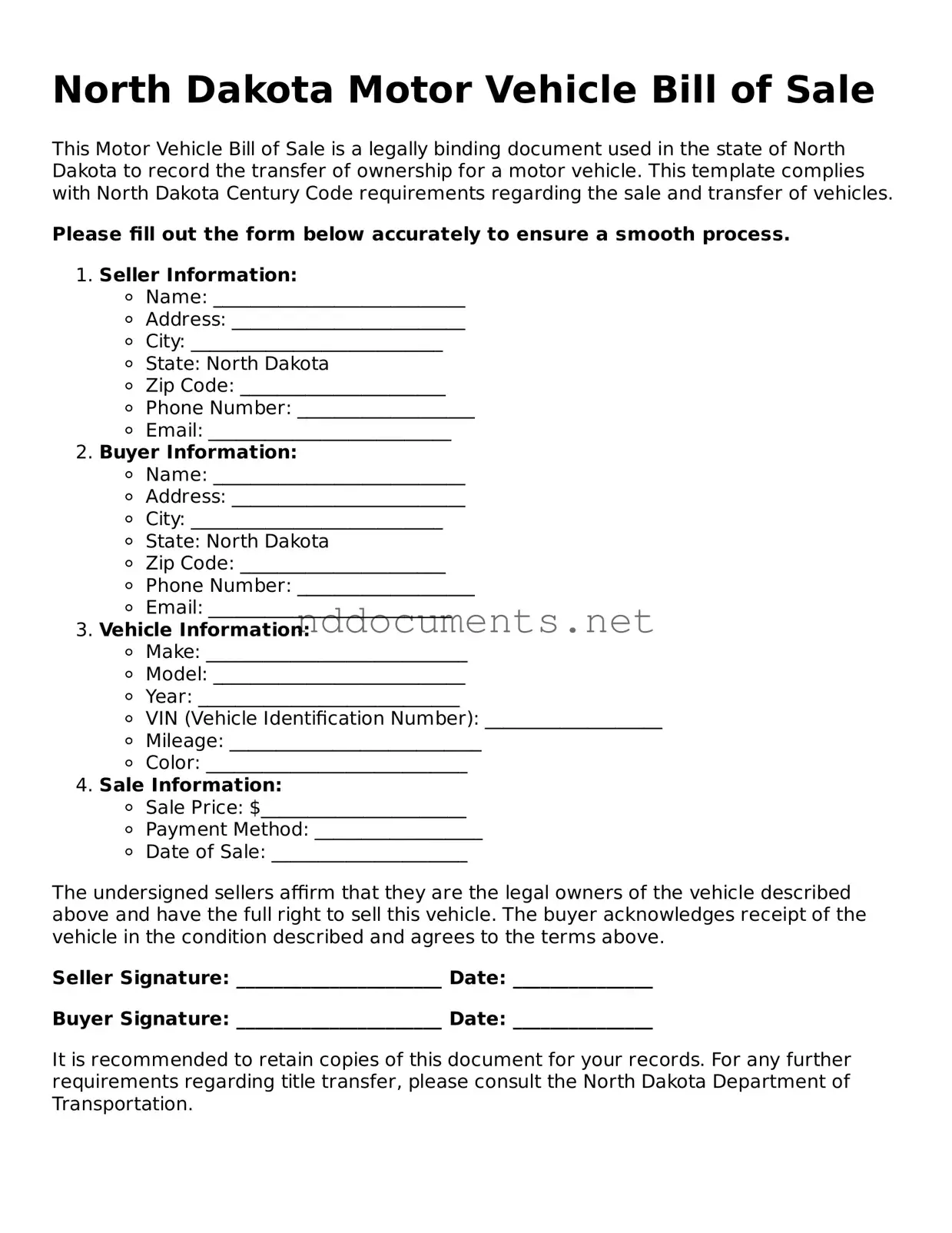The North Dakota Motor Vehicle Bill of Sale form serves as a crucial document in the transfer of ownership for motor vehicles within the state. This form captures essential details, including the names and addresses of both the buyer and seller, the vehicle's make, model, year, and vehicle identification number (VIN). Additionally, it outlines the sale price and any applicable terms of the transaction, ensuring that both parties have a clear understanding of their responsibilities. By providing a written record of the sale, this form helps protect the interests of both the buyer and the seller, offering a layer of security in what can often be a complex process. Furthermore, it is important to note that the form may require signatures from both parties, affirming their agreement to the terms outlined. In North Dakota, this document plays a vital role in the registration process, as it is often required by the Department of Transportation when the new owner seeks to register the vehicle in their name. Understanding the significance and proper use of the Motor Vehicle Bill of Sale form is essential for anyone involved in buying or selling a vehicle in the state.
